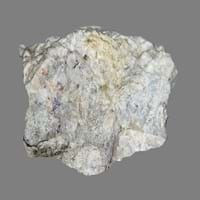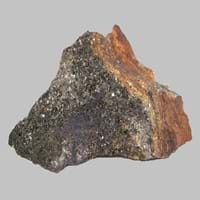Definition
Skarns are formed during regional or contact metamorphism and from a variety of metasomatic processes involving fluids of magmatic, metamorphic, and/or marine origin
Hornfels is a metamorphic rock formed by the contact between mudstone or other clay rich rock, and a hot igneous body, and represents a heat altered equivalent of the original rock
Origin
USA, Australia
New Zealand
Discoverer
Tornebohm
Unknown
Etymology
From an old Swedish mining term originally used to describe a type of silicate gangue or waste rock.
From German which means hornstone
Class
Metamorphic Rocks
Metamorphic Rocks
Sub-Class
Durable Rock, Hard Rock
Durable Rock, Soft Rock
Group
Not Applicable
Not Applicable
Other Categories
Fine Grained Rock, Opaque Rock
Fine Grained Rock, Opaque Rock
Texture
Earthy, Mud-rich, Rough
Granular, Platy
Color
Black, Brown, Colourless, Green, Grey, White
Brown, Dark Greenish - Grey, Green, Reddish Brown
Durability
Durable
Durable
Interior Uses
Decorative Aggregates, Entryways, Interior Decoration
Decorative Aggregates, Flooring, Homes, Interior Decoration
Exterior Uses
As Building Stone, As Facing Stone, Garden Decoration, Paving Stone
As Building Stone, As Facing Stone, Garden Decoration, Office Buildings, Paving Stone
Other Architectural Uses
Curbing
Curbing
Construction Industry
As a Flux in the Production of Steel and Pig Iron, As a Sintering Agent in Steel Industry to process Iron Ore, As Dimension Stone, Gold and Silver production, Manufacture of Magnesium and Dolomite Refractories
for Road Aggregate, Roadstone
Medical Industry
Not Applicable
Not Yet Used
Antiquity Uses
Artifacts, Monuments, Sculpture
Artifacts, Monuments
Commercial Uses
Creating Artwork, Gemstone, Jewelry, Metallurgical Flux, Source of Magnesia (MgO)
Cemetery Markers, Commemorative Tablets, Creating Artwork
Types
Endoskarns
Biotite hornfels
Features
Host Rock for Lead, Zinc and Copper Deposits
Smooth to touch
Archaeological Significance
Famous Monuments
Data Not Available
Data Not Available
Sculpture
Used
Not Yet Used
Famous Sculptures
Data Not Available
Not Applicable
Pictographs
Not Used
Used
Petroglyphs
Not Used
Used
Figurines
Used
Not Yet Used
Formation
Due to change in environmental conditions, rocks are heated and pressurized deep inside the Earth's surface. Skarn is formed from the extreme heat caused by magma or by the intense collisions and friction of tectonic plates.
Due to change in environmental conditions, rocks are heated and pressurized deep inside the Earth's surface. Hornfels is formed from the extreme heat caused by magma or by the intense collisions and friction of tectonic plates.
Mineral Content
Calcite, Enstatite, Epidote, Garnet, Magnetite, Pyroxene, Titanite
Andalusite
Compound Content
Au, CaO, Carbon Dioxide, Cu, Fe, MgO
Fe, Mg
Types of Metamorphism
Burial Metamorphism, Cataclastic Metamorphism, Contact Metamorphism, Hydrothermal Metamorphism, Impact Metamorphism, Regional Metamorphism
Not Applicable
Types of Weathering
Not Applicable
Biological Weathering
Types of Erosion
Not Applicable
Chemical Erosion, Glacier Erosion, Sea Erosion, Water Erosion, Wind Erosion
Grain Size
Fine Grained
Fine Grained
Fracture
Irregular
Conchoidal
Streak
Light to dark brown
Unknown
Porosity
Less Porous
Highly Porous
Luster
Waxy and Dull
Shiny
Compressive Strength
Not Available
Toughness
2.4
Not Yet Found
Specific Gravity
2.86
3.4-3.9
Transparency
Opaque
Opaque
Density
2.8-2.9 g/cm3
0.25-0.30 g/cm3
Resistance
Heat Resistant
Heat Resistant, Impact Resistant, Pressure Resistant
Deposits in Eastern Continents
Asia
China, India, Russia, Saudi Arabia, South Korea, Sri Lanka
Bangladesh, Bhutan, China, India, North Korea, Qatar, Russia, Saudi Arabia, South Korea, Thailand
Africa
South Africa, Western Africa
Cameroon, East Africa, Tanzania, Western Africa
Europe
United Kingdom
United Kingdom
Others
Not Yet Found
Not Yet Found
Deposits in Western Continents
North America
Canada
Canada, USA
South America
Brazil, Colombia, Paraguay
Bolivia, Brazil, Colombia, Ecuador
Deposits in Oceania Continent
Australia
Central Australia, Western Australia
New South Wales, New Zealand, Queensland, Western Australia
All about Skarn and Hornfels Properties
Know all about Skarn and Hornfels properties here. All properties of rocks are important as they define the type of rock and its application. Skarn and Hornfels belong to Metamorphic Rocks.Texture of Skarn is Earthy, Mud-rich, Rough whereas that of Hornfels is Granular, Platy. Skarn appears Dull and Hornfels appears Dull. The luster of Skarn is waxy and dull while that of Hornfels is shiny. Skarn is available in black, brown, colourless, green, grey, white colors whereas Hornfels is available in brown, dark greenish - grey, green, reddish brown colors. The commercial uses of Skarn are creating artwork, gemstone, jewelry, metallurgical flux, source of magnesia (mgo) and that of Hornfels are cemetery markers, commemorative tablets, creating artwork.










